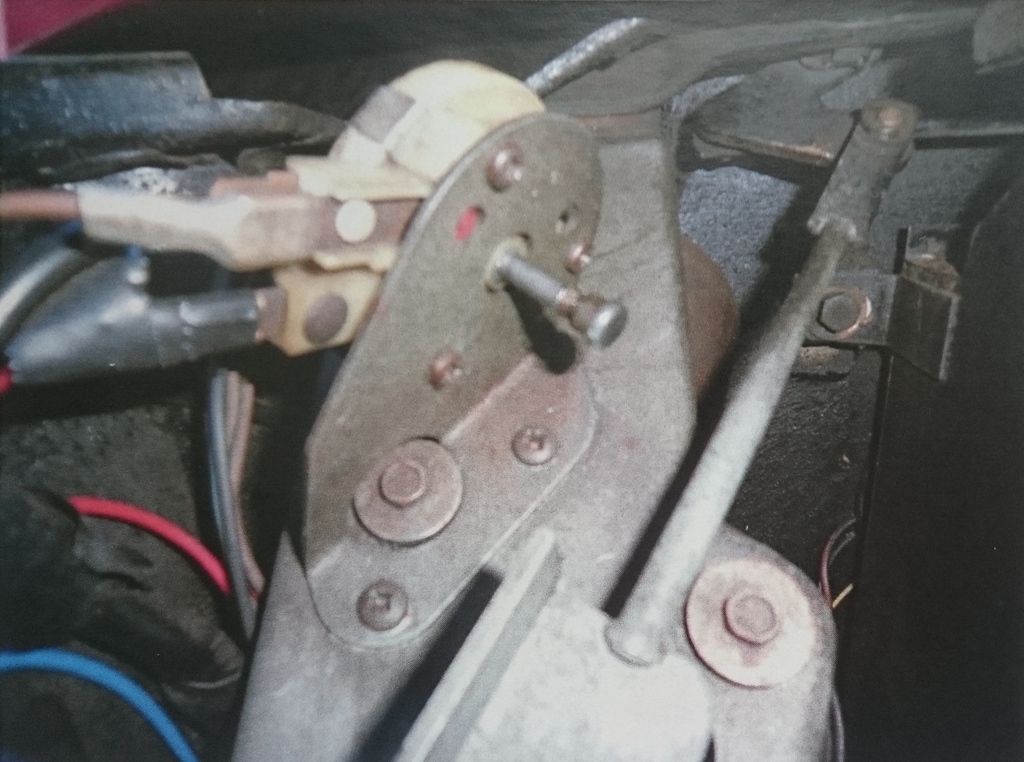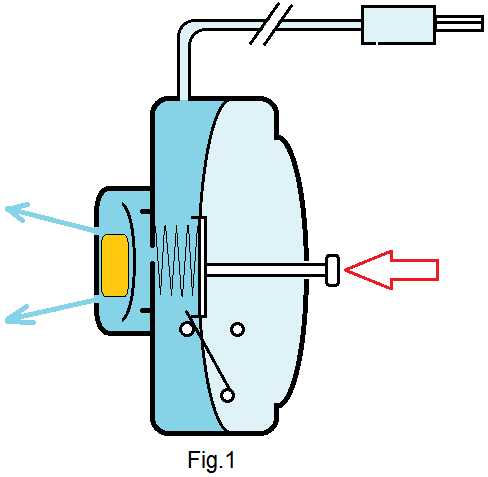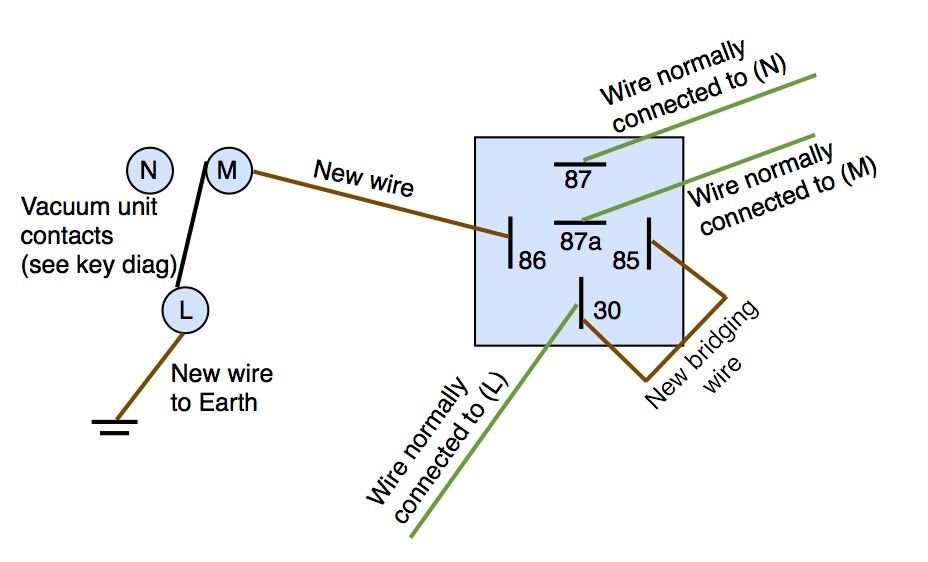Wash. Wipe. Pause. Repeat.
How to overhaul the series 2 P6 wiper delay system and improve your windscreen washers
The vacuum wiper delay system
 All Series 2 cars have the vacuum controlled wiper delay system. This is one of the many refinements that arrived with the ‘New Look’ facelift cars in October 1971. It is a beautifully clever yet simple system that allows the driver to continually vary the delay between wipes to give the optimum screen clearing in any conditions without dragging the blades. In conjunction with large wiper blades and electrically pumped washers, the system gives near modern standards of screen clearing. However, it can also be notoriously intermittent (no pun intended!). The following simple steps show how to restore and improve performance to a dependable and reliable state, whatever the weather.
All Series 2 cars have the vacuum controlled wiper delay system. This is one of the many refinements that arrived with the ‘New Look’ facelift cars in October 1971. It is a beautifully clever yet simple system that allows the driver to continually vary the delay between wipes to give the optimum screen clearing in any conditions without dragging the blades. In conjunction with large wiper blades and electrically pumped washers, the system gives near modern standards of screen clearing. However, it can also be notoriously intermittent (no pun intended!). The following simple steps show how to restore and improve performance to a dependable and reliable state, whatever the weather.
How it works
The wiring for the delay function is on a separate circuit to the slow/fast wipe circuit, so if your wipers are inconsistent, don’t park properly, or you have any other problems that aren’t associated with the ‘delay’ position on the wiper switch, you need to check all of the connections and earths at the back of the switch and motor, and that your wiper arms are on the spindles at a suitable angle.



Selecting the ‘delay’ position on the wiper switch diverts the positive feed to the motor via the vacuum delay unit on the motor housing. Inside this unit is a simple two-way switch made of a flexible brass tab (K) and two contacts. One contact goes to the motor to throw the wipers over (M), the other is the park circuit (N), which sets the wipers back to their parked position. When the wipers throw over, a cranked elbow on the wiper arm spindle pushes the pushrod (B) of the vacuum unit into the housing (A) to move the brass tab into contact with the park circuit (Fig 1). The wipers will not throw over again until the pushrod has moved back out so the brass tab can touch the first contact again. An internal spring (D) is attempting to push the pushrod back out, but the speed at which it can move is resisted and slowed by a diaphragm (C) and non-return valve (E, F, G) which create a vacuum. Feeding into the vacuum unit is a plastic hose (H), the other end of which terminates at the white knob on the steering column (J). This knob is a small variable air valve (I), allowing the driver to govern the rate at which air can seep back into the vacuum side of the diaphragm (Fig 2), and therefore the amount of time before the brass tab (K) touches contact M to throw the wipers over again. The result is a continually variable control over the delay between wipes direct from the steering column.
Testing the system
The most likely causes of problems with the delay system are a lack of vacuum (no delay between wipes) or burnt contacts (wipers don’t throw at all, or very intermittently).
To test the vacuum unit, remove the wire connections and hose, and unscrew it from its mounting. Place you finger over the hole that the hose feeds into and push the pushrod fully into the housing. If it pops straight back out again, the fault is either a split diaphragm, ineffective non-return valve or cracked housing. If the pushrod takes a long time to move fully out (at least 5 seconds), but there is no wiper delay when attached to the car, the cause is a split in the hose between the vacuum unit and white knob on the steering column. Replacements are only avaiable second hand, although you might be able to repair with insulation tape if you can find the crack. Beware though, the hoses are brittle and removal is not straight forward!
Overhaul
With the vacuum unit removed from the car, gently prise away the clips holding the two halves of the unit together. Remove the diaphragm/pushrod assembly and inspect it for splits. Small pieces of strong duct tape on both sides may help to restore vacuum as a temporary measure if a replacement isn’t to hand. Soak the diaphragm in some vinyl & rubber cleaner to make it more supple.
Inspect the brass contacts and the brass tab. These are likely to be burnt and coated in carbon deposits, so clean them up with some extra fine emery cloth. Also check that the brass tab is biased towards the contact in front of it not the one behind it (as you look at it), and that it makes a nice tight contact when at rest. You can always bend the brass tab slightly to ensure a tight connection.
Next turn the rear half of the housing over and gently prise the thin steel tab out of the non-return valve. Under this tab is a small piece of foam and a rubber disc. Soak the disc in rubber cleaner to keep it supple (if it is missing or badly perished, a small clipping of vinyl material such as that used as the boot lining might suffice in the short term). Ensure the hole is clear and put the rubber disc back on top of it. Find some new foam sponge (a clean kitchen sponge will do) and cut a small cube about ½”. Put this on top of the rubber disc and press the steel retaining tab back in place. The foam needs to be under constant compression for the non-return action to work, although it shouldn’t be a solid ‘lump’.
Carefully clean everything else out, check the plastic housing for cracks and reassemble the unit, making sure the spring goes between the non-return valve and diaphragm. Test the unit again by checking it holds a vacuum with your finger over the hose inlet and pushing the pushrod fully in. Add extra foam to the non-return if necessary.
Reinstall the unit on the car and reattach the hose. Push the pushrod in by hand and test that the return speed differs after turning the steering column knob to both extremes. If the pushrod comes straight back out, or there no difference in the return speed can be generated by moving the knob, there is a split in the hose, or the knob/air valve unit itself is defective.
Reattach the wiring and test the system fully.
Improvements
Part of the reason for the unit’s unreliability is due to carbon deposits on the brass contacts. The wiper motor is earthed to the body and the switching (both in the dashboard switch and the vacuum unit) is on the positive feed. As there is such a high current draw from the wiper motor, arcing occurs in the vacuum unit just before the brass tab touches the contact. Over time, black deposits accumulate on the contact and prevent the electrical supply getting through. Using a relay to take the load off the contacts is a very sensible solution. If you locate the relay next to the vacuum unit, you don’t need to cut into any existing wires. The wiring diagram for conversion is shown below.

Improving the screen washers
By now the original Trico washer pump motors are invariably worn out, seized or internally degraded and performance is barely up to scratch by modern standards, so it’s a very wise idea to fit one of the modern pumps designed for kit cars. Ideally, you should mount the new pump on top of the washer bottle lid in place of the original Trico one, but if you are concerned about originality, you can relocate it to a secluded spot nearby by cutting into the hose and using the elbow hose joint on the bottle lid for the pick-up hose. Wherever you choose to site it, it’s important to keep the length of hose between the pump and bottle as short as possible. The washer fluid will drain back down into the bottle when not in use, leaving the pump pulling on nothing for a short while when you deploy the washers. If the hose is too long, it may collapse due to the suction and cause the motor to burn out over time. The wiring is long enough to stretch a reasonable distance and the spade connections are the same so it’s an easy and effective upgrade, particularly for winter driving.
Adjust the windscreen washer jets so that they both point straight backwards, and water hits the screen at about two thirds of the way up. This accounts for wind buffeting at motorway cruising speeds and ensures that screen wash always lands within the sweep of the wipers.
If one washer appears to be stronger than the other, use a pin to clean out the jets and ensure that the T-piece splitter in the hose on the underside of the bonnet is arranged so that the feed from the pump enters the bottom of the ‘T’ with the feed to the two jets coming off the two top ‘arms’. This ensures an even pressure to both jets.
Thin cable ties around all of the unions will ensure the hoses don’t pop off the back of the jets under pressure and spray your lovely clean engine bay in screen wash!
Upgrading the Wiper blades
If you’re not concerned about originality, modern quick-release ‘aero’ wiper blades can be fitted to the existing wiper arms by sliding the plastic quick release joint over the arm in place of the stainless steel ones. In either case, up to 16” wiper blades can be fitted in place of the standard 14” ones to increase the swept area of the wipers. With 16” blades, there is a small overlap of half an inch or so in the parked position, so adjust the wiper arms on the splined shafts to ensure the blades don’t come into contact with each other.
Words: Michael Allen
Originally published in Driving Force magazine
December 2012
